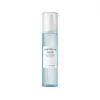What's inside
What's inside
 Key Ingredients
Key Ingredients

 Benefits
Benefits

 Ingredients Side-by-side
Ingredients Side-by-side

Camellia Sinensis Leaf Water
MaskingWater
Skin Conditioning1,2-Hexanediol
Skin ConditioningIsopentyldiol
HumectantCentella Asiatica Extract 0.3%
CleansingCordyceps Militaris Extract
Skin ConditioningHibiscus Esculentus Fruit Extract
Skin ConditioningButylene Glycol
HumectantMethylpropanediol
SolventBetaine
HumectantXylitol
HumectantSodium Hyaluronate
HumectantHydrolyzed Hyaluronic Acid
HumectantHyaluronic Acid
HumectantPolyglyceryl-10 Oleate
Skin ConditioningPolyglyceryl-10 Myristate
Skin ConditioningPentylene Glycol
Skin ConditioningPolyglyceryl-6 Dioleate
EmulsifyingPyrus Communis Fruit Extract
Skin ConditioningAdenosine
Skin ConditioningRosa Damascena Flower Water
MaskingPolyglyceryl-4 Laurate
EmulsifyingEthylhexylglycerin
Skin ConditioningCucumis Melo Fruit Extract
Skin ConditioningCitric Acid
BufferingIris Florentina Root Extract
MaskingSodium Phytate
Hedera Helix Leaf/Stem Extract
AntimicrobialPolyglutamic Acid
Skin ConditioningGalactomyces Ferment Filtrate
HumectantArtemisia Princeps Leaf Extract
Skin ConditioningGlycerin
HumectantCaprylic/Capric Triglyceride
MaskingHydrogenated Lecithin
EmulsifyingCeramide NP
Skin ConditioningCamellia Sinensis Leaf Water, Water, 1,2-Hexanediol, Isopentyldiol, Centella Asiatica Extract 0.3%, Cordyceps Militaris Extract, Hibiscus Esculentus Fruit Extract, Butylene Glycol, Methylpropanediol, Betaine, Xylitol, Sodium Hyaluronate, Hydrolyzed Hyaluronic Acid, Hyaluronic Acid, Polyglyceryl-10 Oleate, Polyglyceryl-10 Myristate, Pentylene Glycol, Polyglyceryl-6 Dioleate, Pyrus Communis Fruit Extract, Adenosine, Rosa Damascena Flower Water, Polyglyceryl-4 Laurate, Ethylhexylglycerin, Cucumis Melo Fruit Extract, Citric Acid, Iris Florentina Root Extract, Sodium Phytate, Hedera Helix Leaf/Stem Extract, Polyglutamic Acid, Galactomyces Ferment Filtrate, Artemisia Princeps Leaf Extract, Glycerin, Caprylic/Capric Triglyceride, Hydrogenated Lecithin, Ceramide NP
 Reviews
Reviews

Ingredients Explained
These ingredients are found in both products.
Ingredients higher up in an ingredient list are typically present in a larger amount.
1,2-Hexanediol is a synthetic liquid and another multi-functional powerhouse.
It is a:
- Humectant, drawing moisture into the skin
- Emollient, helping to soften skin
- Solvent, dispersing and stabilizing formulas
- Preservative booster, enhancing the antimicrobial activity of other preservatives
Adenosine is in every living organism. It is one of four components in nucleic acids that helps store our DNA.
Adenosine has many benefits when used. These benefits include hydrating the skin, smoothing skin, and reducing wrinkles. Once applied, adenosine increases collagen production. It also helps with improving firmness and tissue repair.
Studies have found adenosine may also help with wound healing.
In skincare products, Adenosine is usually derived from yeast.
Learn more about AdenosineBetaine is a common humectant (a substance that promotes retention of moisture). It's known to be gentle on the skin and can help balance hydration.
This ingredient is best for improving hydration and soothing irritated skin. Studies also show it helps even out skin tone.
Fun fact: Betaine is naturally created in the skin and body. The kind found within cosmetic products can be either plant-derived or synthetic.
Another name for betaine is trimethylglycine.
Learn more about BetaineCentella Asiatica Extract (Centella) is derived from an herb native to Southeast Asia. It is famous for its anti-inflammatory and soothing properties.
Centella is rich in antioxidants and amino acids, such as Madecassic Acid and Asiaticoside.
Studies show the compounds in centella help with:
The combination of all these properties makes centella effective at soothing, hydrating, and protecting the skin.
Other great components of centella include Vitamin A, vitamin C, several B vitamins, and Asiatic Acid.
Fun fact: Centella has been used as a medicine and in food for many centuries. As a medicine, it is used to treat burns, scratches, and wounds.
Learn more about Centella Asiatica ExtractEthylhexylglycerin (we can't pronounce this either) is commonly used as a preservative and skin softener. It is derived from glyceryl.
You might see Ethylhexylglycerin often paired with other preservatives such as phenoxyethanol. Ethylhexylglycerin has been found to increase the effectiveness of these other preservatives.
Hyaluronic acid is naturally found in healthy skin. It is a humectant, meaning it draws moisture to your skin.
This ingredient helps hydrate, soothe, and protect the skin.
What makes hyaluronic acid so hydrating? It has the capacity to bind or hold large amounts of water.
Fun fact: It is already naturally found in our bodies, such as the fluids of our eyes and our joints.
Studies find this ingredient to have anti-inflammatory and anti-microbial properties. This can help speed up wound-healing.
Hyaluronic acid can be irritating if the molecule has a low-molecular weight, or if the molecules are small.
One study found low-molecular weight hyaluronic acid to be pro-inflammatory, meaning some people may experience irritation. This is because our bodies use hyaluronic acid in the wound-healing process to signal to our bodies, via irritation, that something needs healing.
The same study found high-molecular weight hyaluronic acid to be anti-inflammatory.
These are some other common types of Hyaluronic Acid:
Learn more about Hyaluronic AcidWater. It's the most common cosmetic ingredient of all. You'll usually see it at the top of ingredient lists, meaning that it makes up the largest part of the product.
So why is it so popular? Water most often acts as a solvent - this means that it helps dissolve other ingredients into the formulation.
You'll also recognize water as that liquid we all need to stay alive. If you see this, drink a glass of water. Stay hydrated!
Learn more about Water